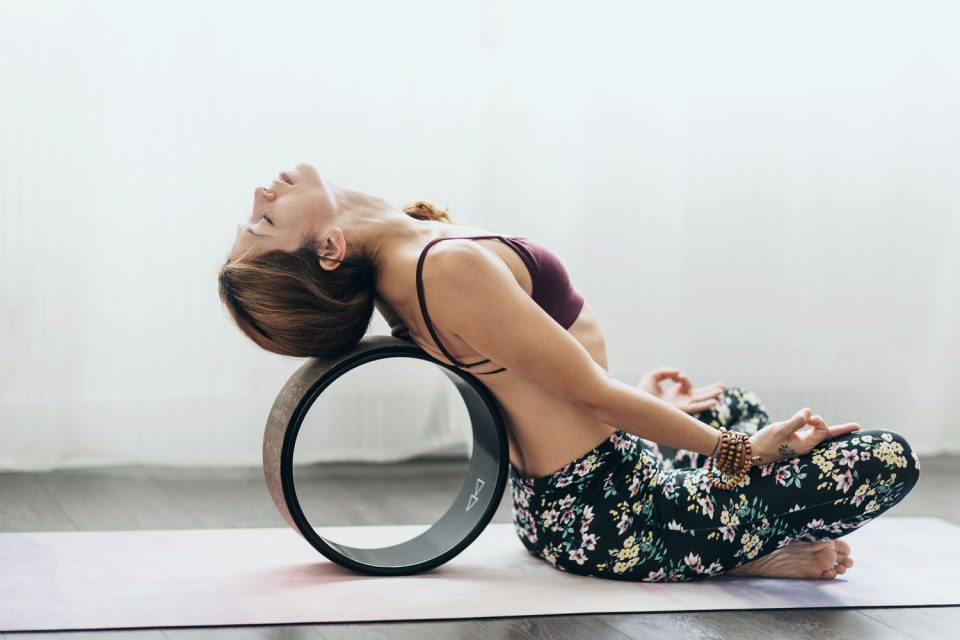The rise of prop-integrated yoga has redefined what it means to “flow” on the mat. Among all the tools that have gained traction, the yoga wheel has proven itself a favourite for those seeking to evolve beyond static postures. Used intelligently, it transforms transitions, amplifies core engagement, and unlocks new levels of creativity in vinyasa-based movement.
This article takes an in-depth look at how you can creatively incorporate the yoga wheel into intermediate and advanced sequences—refining not just physical performance but also breath, awareness, and artistic expression.
Redefining Vinyasa: What the Yoga Wheel Adds
Traditional vinyasa flows focus on breath-linked movement, fluid transitions, and meditative momentum. When a yoga wheel is introduced, these principles are elevated by:
- Adding unpredictability, which sharpens focus
- Requiring micro-adjustments, which improves balance
- Encouraging deeper muscle activation, especially in the core, shoulders, and back
Rather than being a crutch, the wheel acts as a co-creator in movement—demanding alignment, presence, and thoughtful sequencing.
Studios like Yoga Edition have embraced this innovation, offering progressive classes that use the wheel to inspire creative sequencing and embodied learning.
Why Creative Flow Matters in Evolving Practice
As practitioners become more seasoned, repetition of the same sequences can lead to mental stagnation and physical plateau. Integrating creative movement:
- Stimulates neuroplasticity by challenging new patterns
- Reinvigorates the mind-body connection
- Prevents overuse injuries by diversifying muscular engagement
- Builds functional mobility by mimicking real-world movement
In this sense, creativity is not ornamental—it’s essential for a well-rounded practice.
Foundations First: Establishing Control Before Flow
Before moving into complex sequences, mastery of foundational wheel-supported postures is crucial:
- Low Lunge with Wheel Support
- Wheel-Supported Downward Dog
- Bridge Pose with Wheel Under Sacrum
- Wheel-Assisted Plank Variations
These build the proprioceptive and strength base necessary for fluid movement without compromising alignment.
Flow Structure Blueprint: How to Sequence Creatively
Every creative wheel flow should include:
- Grounding Entry
Gentle rolling, breathwork, and spinal mobility
- Activation Segment
Core drills and standing balances with wheel challenge
- Dynamic Sequence
Linked asanas using the wheel for support, glide, or resistance
- Cooling Down
Supported twists, heart openers, and savasana on the wheel
Sample Intermediate Flow Sequence Using the Yoga Wheel
Below is a balanced 10-pose vinyasa-style flow integrating the yoga wheel:
🔹 1. Rolling Cat-Cow
- Start in tabletop with hands on the wheel
- Roll forward and back with breath
🔹 2. Wheel Down Dog
- Feet on the mat, hands gripping the sides of the wheel
- Encourage length through shoulders and hamstrings
🔹 3. Wheel Lunge with Twist
- Front foot beside the wheel, back leg extended
- One hand on the wheel for spinal rotation
🔹 4. Floating Warrior III
- Place hands on the wheel in front
- Extend one leg back while hinging forward
🔹 5. Wheel-Assisted Plank to Chaturanga
- Feet on the wheel, hands on mat
- Lower slowly with core engagement
🔹 6. Sphinx to Seal with Wheel
- Lie on belly, forearms resting on the wheel
- Roll gently to open thoracic spine
🔹 7. Wheel Camel (Ustrasana)
- Kneel with the wheel behind back
- Reach for the wheel to support backward bend
🔹 8. Half Split to Lizard Flow
- Wheel beneath front calf
- Move dynamically between both postures
🔹 9. Wheel-Reclined Twist
- Lie back with legs on wheel
- Drop knees side to side for spinal release
🔹 10. Supported Savasana
- Final resting pose with spine draped over the wheel
This structure balances challenge and surrender, energising and restoring simultaneously.
Tips for a Fluid and Safe Flow
- Focus on breath pacing: Match every movement to inhale or exhale
- Micro-movements matter: Let each shift be intentional, not rushed
- Train transitions: The “in-between” poses are where growth lies
- Accept instability: Use wobbles as teachers, not distractions
Creative Uses Beyond Yoga Poses
The yoga wheel isn’t confined to classic asanas. Creative practitioners have expanded its use into:
- Dance-inspired movement transitions
- Partner balancing sequences
- Handstand and forearm stand drills
- Wheel-based animal flow movements
These integrations highlight the yoga wheel’s capacity for play and performance, in addition to its therapeutic and strengthening roles.
Frequently Asked Questions (FAQ)
❓ Is the yoga wheel suitable for beginners in flow classes?
Only if foundational control has been established. Start slow and seek guidance.
❓ How do I avoid wrist strain?
Use wrist warm-ups and distribute weight evenly when gripping the wheel.
❓ Can I use the wheel in a hot yoga class?
Yes, but grip can be an issue. Opt for wheels with textured padding.
❓ How often should I practise creative flows with the yoga wheel?
2–3 times a week offers consistency without fatigue.
Final Thoughts
The yoga wheel is far more than a static support—it is an invitation to evolve your flow, deepen your focus, and reclaim movement as a form of art. By incorporating it mindfully, you open a new chapter of embodied expression, where strength meets elegance and structure dances with spontaneity.
Whether you’re a seasoned practitioner or a yoga teacher looking to expand your offerings, creative wheel sequences provide limitless potential for growth. For a community-based experience guided by knowledgeable instructors, explore curated flow sessions at Yoga Edition.

